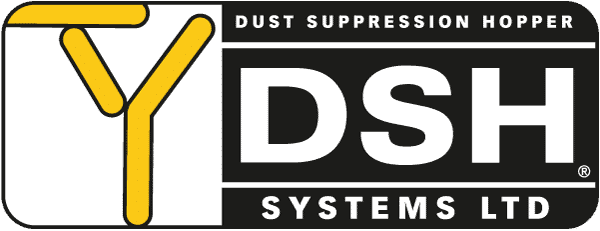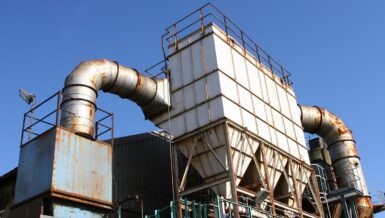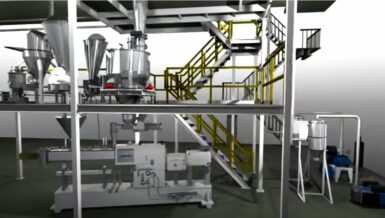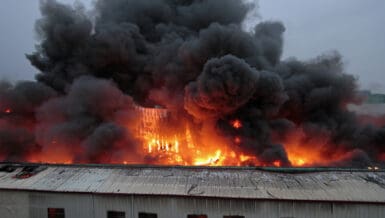Dust Control Challenges
Active grain loading and transfer operations can produce huge amounts of dust, resulting in a variety of hazards such as low visibility for nearby workers or a potential dust explosion within confined loading areas. All that airborne dust also represents waste, as it does not end up in the load.
Cleaning and maintenance operations are also negatively impacted by dust settling on surfaces. Finally, large amounts of dust emitted on a routine basis can affect air quality and potentially violate local air quality regulations. For these reasons, dust control is a major priority at the port.
Dust Suppression Hoppers
To solve the challenge, the port invested in a Dust Suppression Hopper (DSH) system installed at five key grain transfer locations at the facility, including inside a warehouse, at a barge loading dock, and at three truck loading locations.
Each hopper is installed under a feed point where it can be suspended above the discharging target and kept at operating level. A small degree of natural agitation as the hopper is filled helps exclude air from mixing with the material being transferred. At the point of loading, the DSH system concentrates the discharge of bulk cargo into a solid column with minimal secondary dust. The hoppers require no electric power and have no internal moving parts.
Benefits of Dust Suppression Hoppers:
The installation of the hoppers has resulted in a dramatic decrease in airborne dust during loading and transfer operations at those locations. There are many benefits to using this system:
- Better air quality and visibility
- A healthier and safer working environment
- Reduced risk of dust explosions
- Faster and cleaner loading processes
- Significantly lowered product loss during loading
- Reduced maintenance, dust disposal, and cleaning costs
- Removal of air from products
- increases storage capacity
Controlling dust risks isn’t just about ensuring that workers are wearing the right PPE for the job. The best solution is always to eliminate or capture as much dust as possible at the source. Investing in a healthier working environment is one way we show care and concern for our employees and the community we serve.”
John Zhao, EHS Director, Asia












































